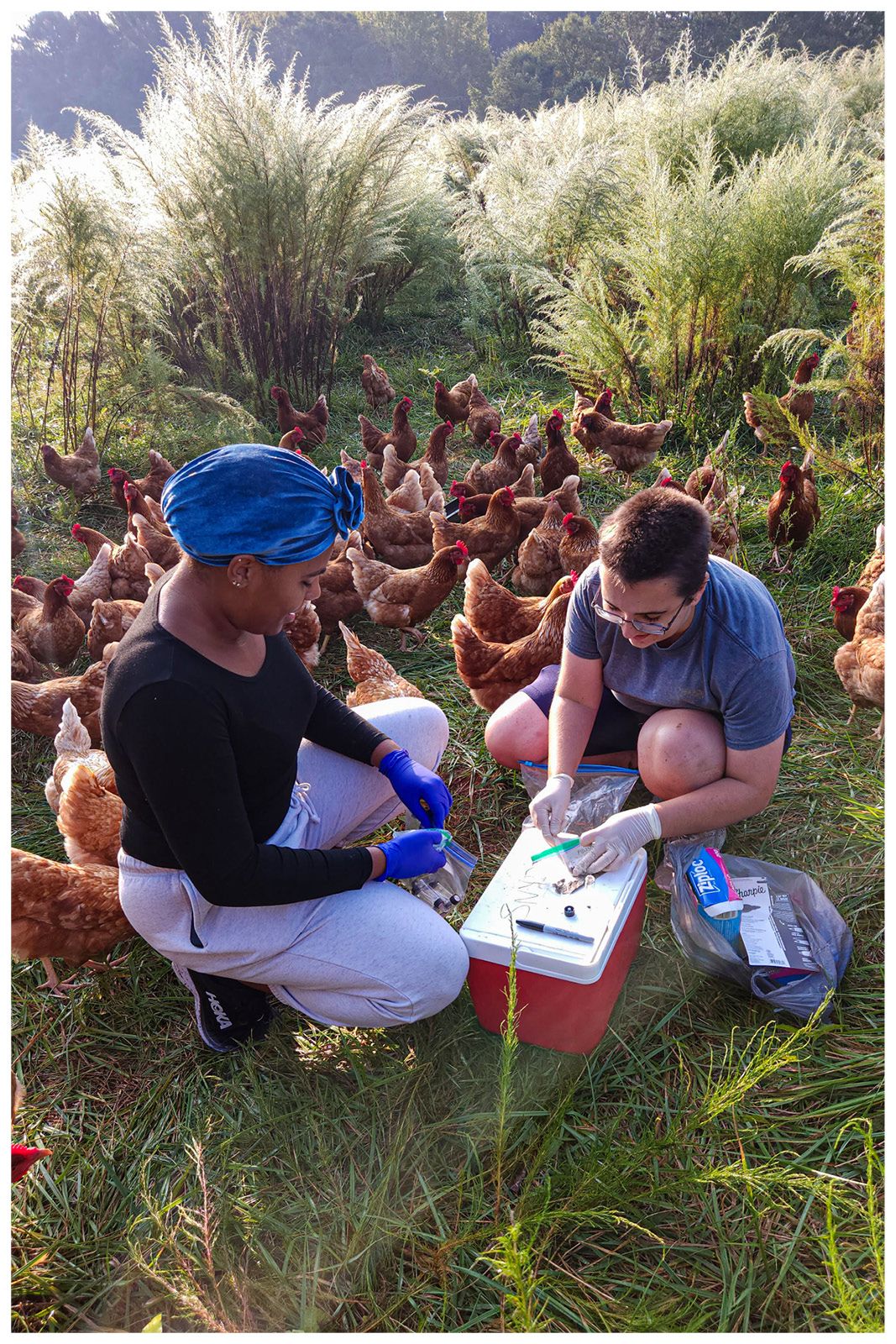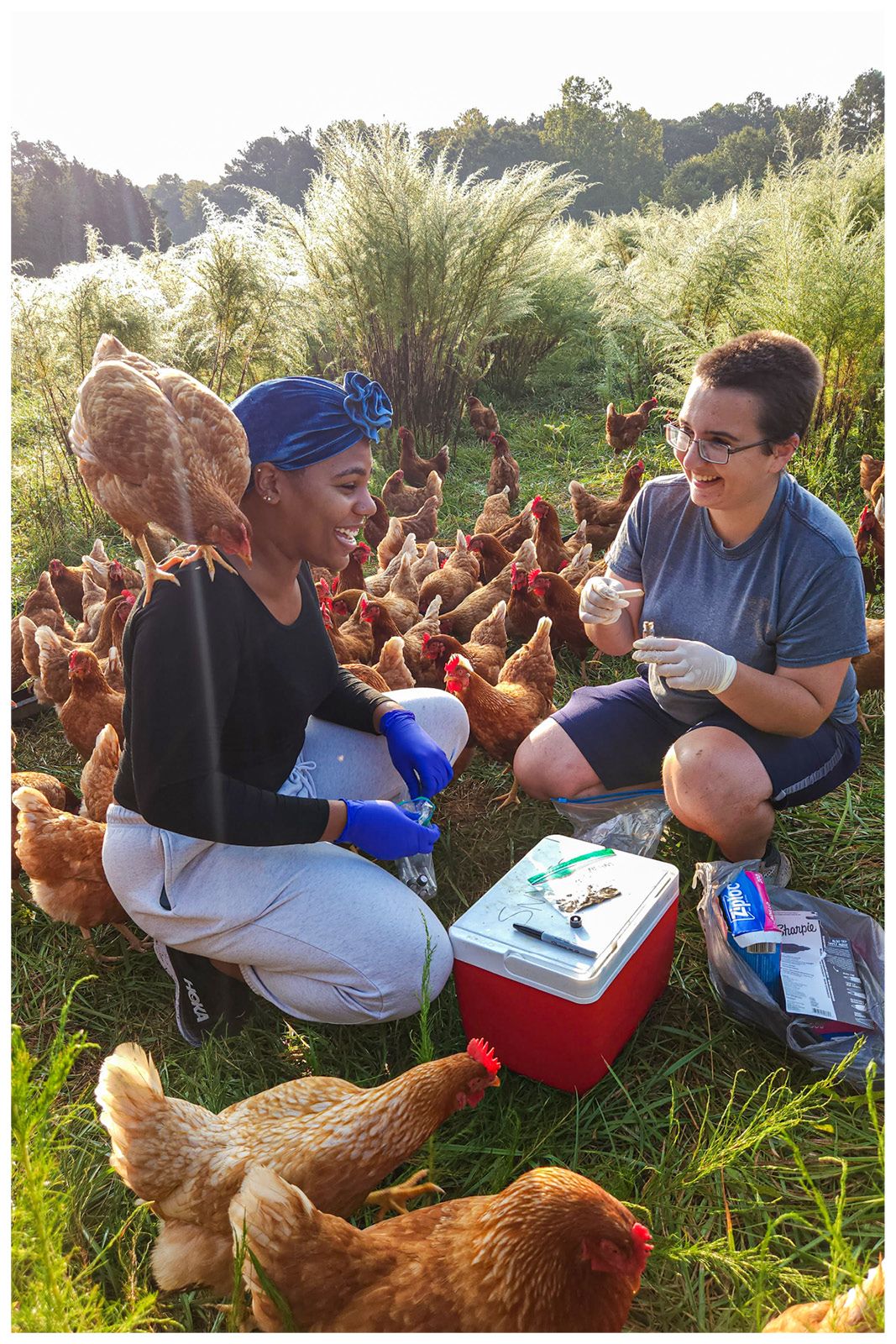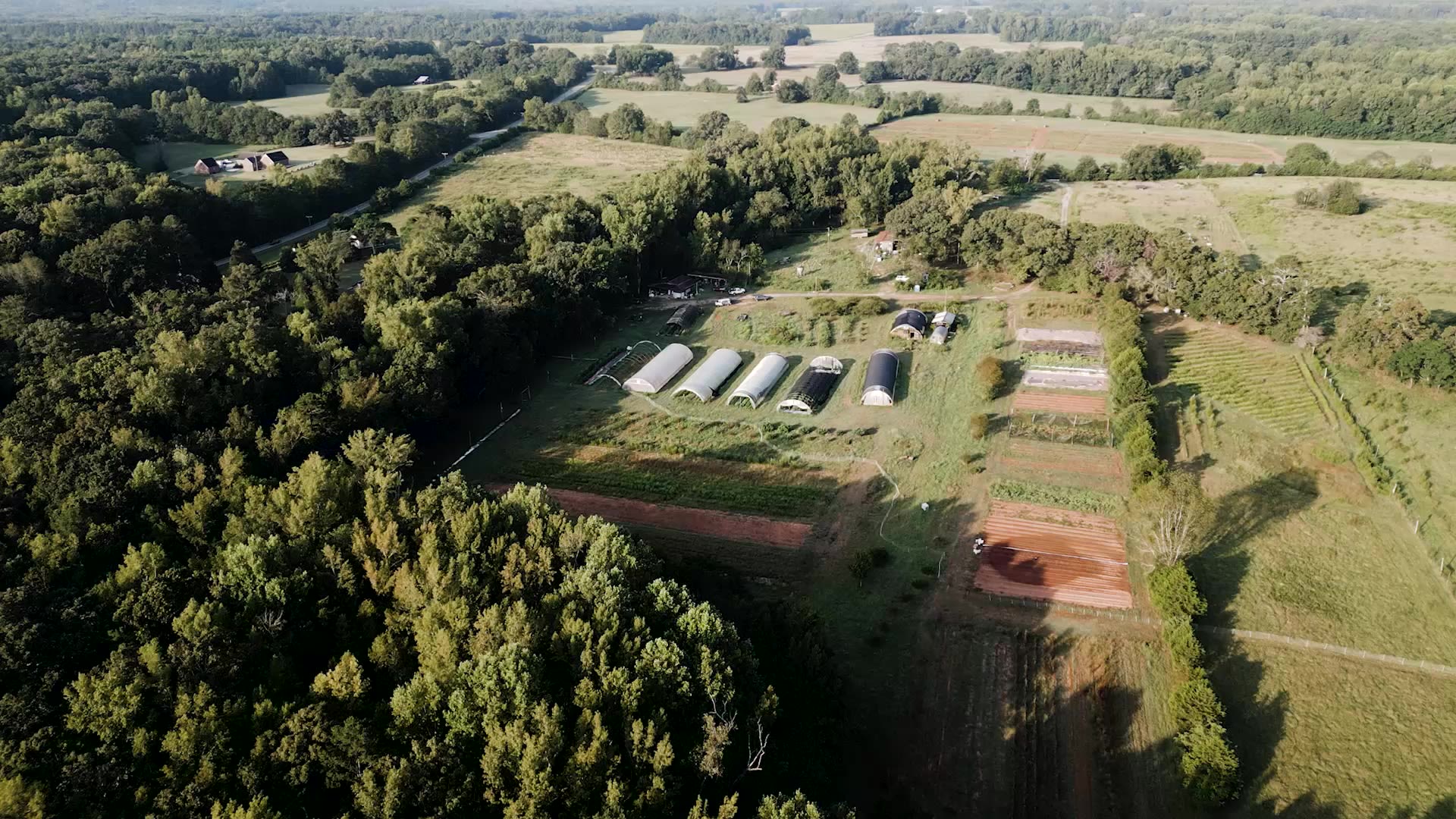Litterary Analysis
UGA researchers undertake ChickEES study to determine how free-range chickens influence farm sustainability

Leniha Lagarde (left) and Sofia Varriano collect feces samples from pastured chickens at Foster Brady Farms in Madison, Georgia.
Leniha Lagarde (left) and Sofia Varriano collect feces samples from pastured chickens at Foster Brady Farms in Madison, Georgia.
Researchers in the University of Georgia’s College of Agricultural and Environmental Sciences are using molecular genetics to determine how pastured and free-range chickens influence the ecosystem on farms where crops and livestock are raised together.
Supported by a $749,000 grant from the U.S. Department of Agriculture’s National Institute of Food and Agriculture, entomology doctoral student Sofia Varriano and her thesis advisor, agroecologist and systems biology Professor Bill Snyder, are testing the promise of integrated crop-livestock agriculture to increase the sustainability of smaller farms.
“We're interested in this group of farmers that have livestock and crop production within the same farms for their operation. Nowadays we call that integrated crop-livestock agriculture, but 100 years ago what did we call that? We called it farming,” Snyder said. “Every farm, pretty much everywhere in the world, had that model. We’re interested in whether there are aspects of that farming approach that can be useful in a modern setting.”
Using DNA analysis to demystify diets
Called “Chicken Ecology and Ecosystem Services,” or ChickEES, the three-year project will detail what the birds on each farm are consuming by analyzing the DNA remains in chicken feces. With this information, producers can determine how their chickens are helping to control pest insects and weeds.
While research on poultry nutrition in controlled production facilities is plentiful, Snyder said there is little available information on what chickens on smaller farms with integrated poultry production practices are eating in a natural setting.
“That got us interested in what these chickens eat. Chickens are what we call generalist predators, which means they're hungry, and they don't care what they eat, whether it's a plant or a spider or an aphid or a pest caterpillar — they eat everything. Likewise, they eat things like earthworms, which are beneficial to the soil,” he explained. “Do they mostly eat pests? What weeds do they eat? Are there particular pest species or particular weed species that they prefer? These are the questions we're interested in.”
Natural pest control and soil amendment benefits
With this knowledge, producers can modify their weed and pest control practices to work in tandem with pastured or free-range chickens.
“The farmers we're working with have these diversified farms, and a lot of them intuitively feel that it probably has some pest control advantage. This will answer that,” Snyder added. “The other thing the animals do is poop, so that's manure, that's fertilizer. The animals and the crops can kind of complement one another in that way.”
Varriano, who came to CAES to study wild birds, pivoted to poultry research when the pandemic closed labs in 2020.
This project focuses on chickens with outdoor access, whether they are pastured, free-range or otherwise have the ability to roam outside. DNA samples collected from the chickens are sent off for analysis to identify arthropods and plants through sequencing. By comparing the sequences to a species database, researchers aim to determine what the chickens are consuming, Varriano explained.
“The end goal with these data is to give growers this information so it can benefit whatever farming they're doing. One system helps support the other. Using chickens to control pests and enrich the soil to benefit your crops would be one integrative strategy,” Varriano said.
“We want to help growers take full advantage of the chickens that they have on their farms.”
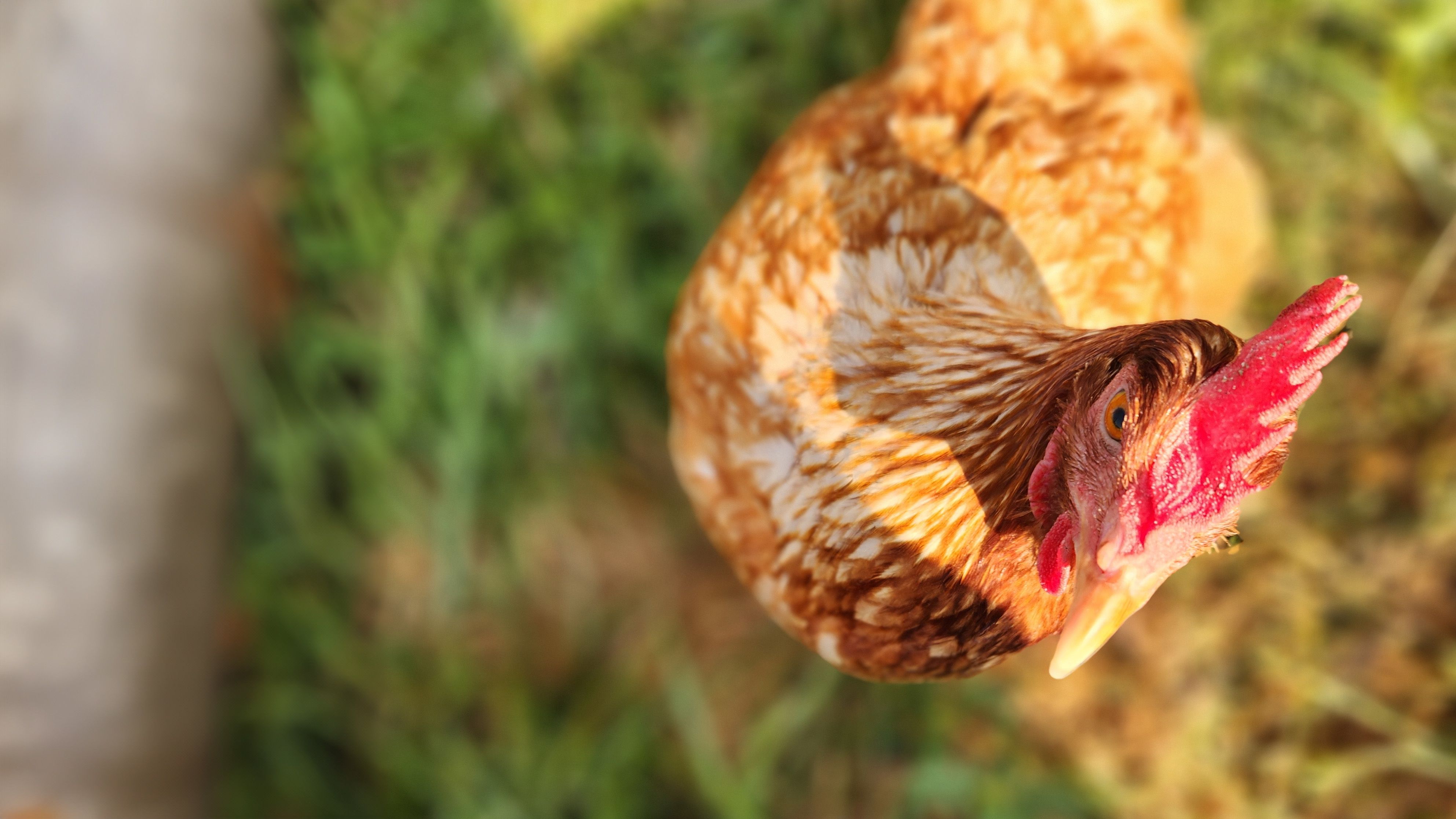
Pooper scoopers for gene analysis
To widen the study sample, the research team is ready to send out 100 “Chicken Dinner Meal Kits,” small boxes containing everything needed to participate in the study: three sample containers prefilled with a DNA shield buffer, gloves and a scoop.
“We will send these out to growers free of charge. They can go on our website and request a kit. Growers can go out in the morning, scoop three different chicken poops, put them in these containers, shake it up and ship it back to us,” Varriano said. “We will be able to tell them exactly what their chickens are eating on their farms.”
Each sample box comes with a prepaid return label that turns the box into a return parcel. From there, the researchers will extract DNA from the samples, then send the samples to a DNA sequencing lab for analysis.
“When we receive the sequences back, we do the bioinformatics work ourselves. We’ve built a custom CO1 library to be able to identify those arthropods in our lab,” Varriano explained. CO1 is a gene widely used to identify and classify species. A CO1 library is a collection of sequenced DNA fragments from the CO1 gene.
“We took sequences from publicly available databases and created a custom library. We are able to match any DNA sequence to any one of those library sequences to know exactly what insect or plant the chicken ate,” she added.


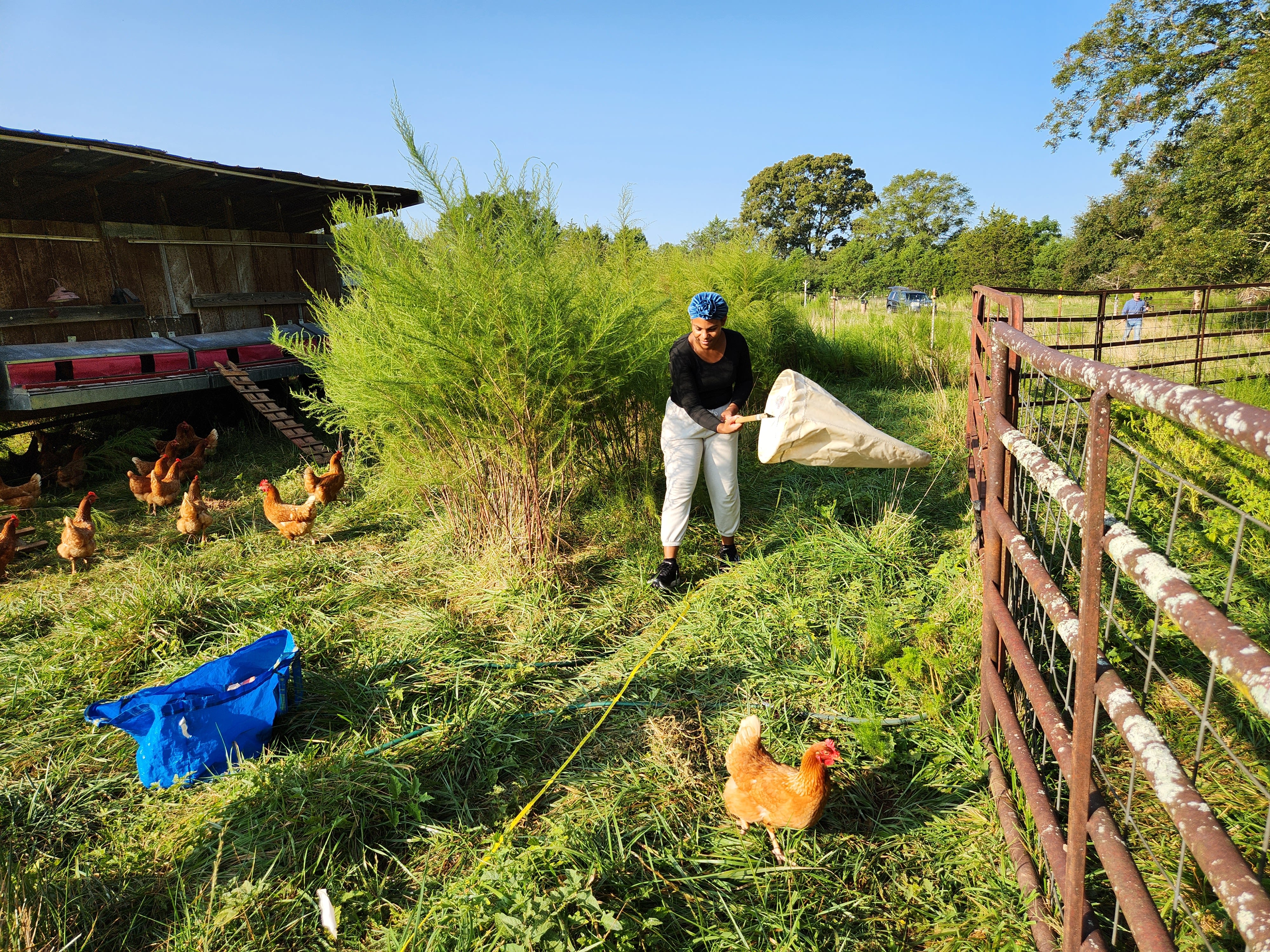
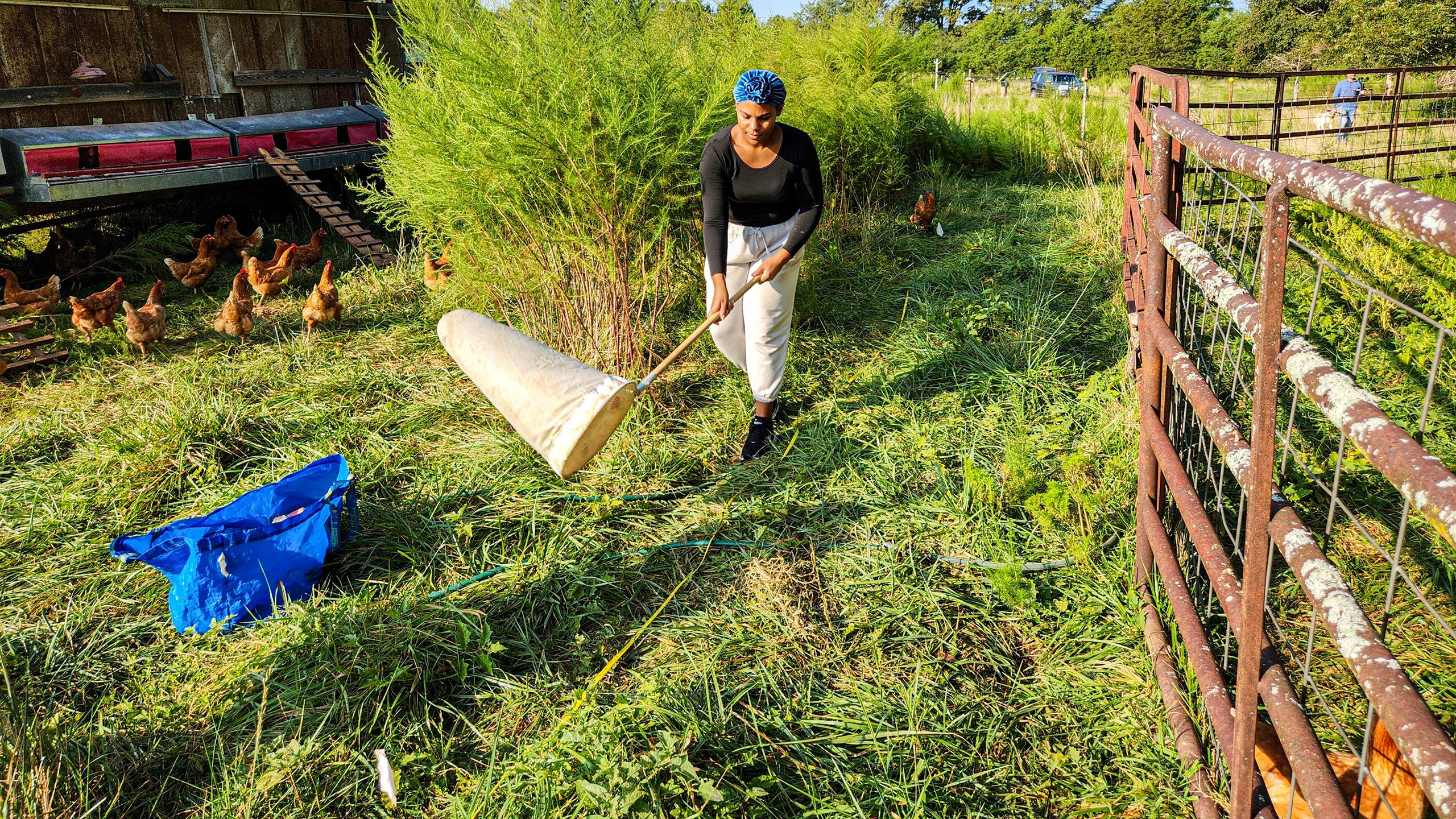
The collected litter is transported back to the lab in a cooler.
The collected litter is transported back to the lab in a cooler.
(Photo by Lavi del Carmen Astacio)
(Photo by Lavi del Carmen Astacio)
Is chicken poop the key to sustainability?
The public plea for poop is designed to get a larger sample of growers from the public to broaden the results of the study. The team has already contacted researchers doing similar work at other institutions to solicit samples from producers in other states and regions.
“We are trying to cover a wide geographic distribution so we can see if chickens are eating different things on the West Coast compared to here,” Varriano said.
There is no charge for participating in the study. To determine how different natural diets influence animal health, producers who send in samples will receive data comparing the results within each individual farm system and each farm as a whole against samples from other farms.
The researchers also will monitor how soil quality changes when pastured chickens are moved from area to area on farms by performing full soil-quality tests to look at the weed seed bank and extracting DNA from the soil to look at microbial biodiversity.
“Chickens, presumably, when they're coming through and pooping, they're dropping a lot of nitrogen, and that's probably changing the soil microbiome. And is that beneficial? Is it building up?” Snyder said. “There's some decent evidence that when you have greater biodiversity and microbes, it makes it harder for pathogens to persist. So are they actually building up the health of the soil in a really general way, not just with nitrogen, but also microbial biodiversity.”
Measuring ecosystem health
The researchers also will monitor how soil quality changes when pastured chickens are moved from area to area on farms, performing full soil-quality tests to look at the weed seed bank and extracting DNA from the soil to assess microbial biodiversity.
“Chickens, presumably, when they’re coming through and pooping, they’re dropping a lot of nitrogen, and that’s probably changing the soil microbiome. And is that beneficial? Is it building up?” Snyder said. “There’s some decent evidence that when you have greater biodiversity and microbes, it makes it harder for pathogens to persist. Are they building up the health of the soil in a general way, not just with nitrogen, but also microbial biodiversity?”
Nikki Shariat, an associate professor in the Department of Population Health, Poultry Diagnostic and Research Center at the UGA College of Veterinary Medicine, will test samples for the presence of Salmonella and Campylobacter. By performing whole-genome sequencing on the bacteria, researchers can determine where the foodborne illness-causing bacteria originated in the farm environment.
“Where on the farm might they be picking these things up? We want to see how often they are present to get some idea of what the incidence would be,” Snyder added. “We want to give the growers a full picture — here are the pests the chickens are eating, here are the beneficials they’re eating, here’s your food safety risk.”
Enhancing local food systems and farms
The findings have the potential to benefit growing local food systems in populated areas.
“Economically, if you have 10 acres that you're farming instead of 1,000 acres, you have to know how to generate enough income. That comes down to diversification,” Snyder said, adding that “chickens in these systems are providing eggs or meat that you can sell, they’re providing fertilizer and they’re providing pest and weed control.
“When you're trying to keep costs low and reduce off-farm inputs as much as you can, if more of that can be produced on farm, it's better for the producer. We are helping those things work together,” he said.
“The better these producers can function, the more opportunity they have for people in the public to enjoy what they're doing and for them to make a profit.”


